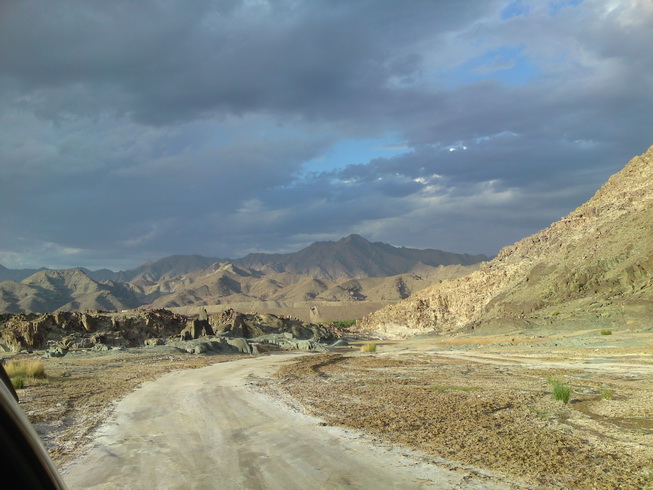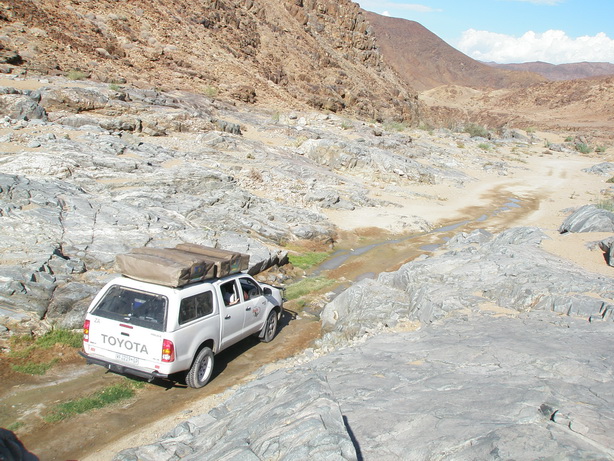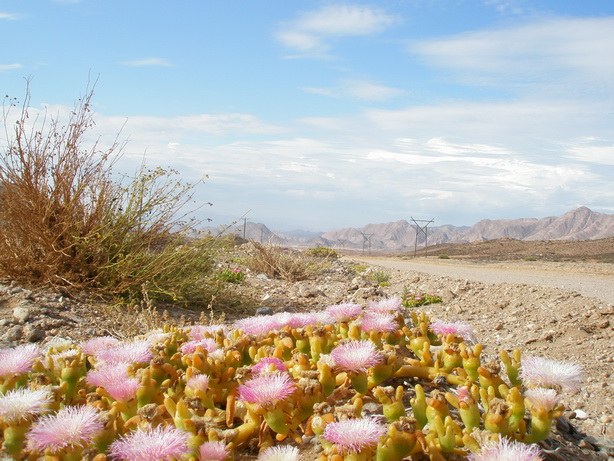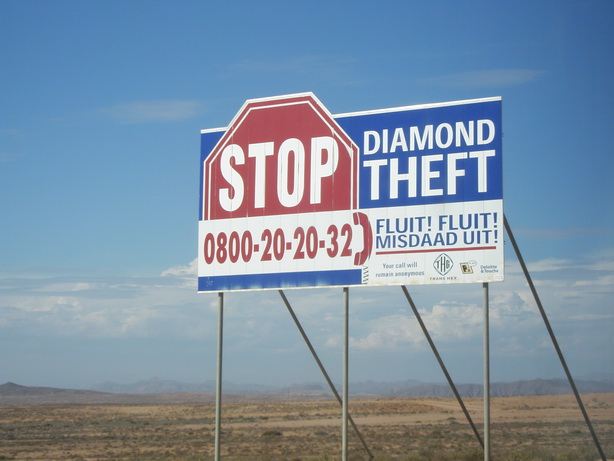Richtersveld Epiphany
Somewhere after passing through the Cederberg, and after leaving Sutherland – a place hard fought for through an eleven hour drive off-road and cresting over a spectacular unmarked pass that sends gravel and dust skidding down onto the desert floor far below – and after Augrabies with its truly impressive display of what happens when you take force A (the Orange river) and constrict it with gap B (the sheer rock walls of the Fish River Canyon) in the middle of a desert, I had an epiphany.

There is something about being on an ancient salt pan flat on a day that squeezes all memory of water and coolness from you like a tourniquet, that brings sudden clarity with it. You know you are closer to lost than found out here when you open the door of the 4×4 and the wall of heat threatens to desiccate you, and you look down at the ground it’s not even dust really – just shards of shale lying scattered endlessly towards the shockingly enticing shimmering mirage in the perpetual middle distance. And even the telephone poles have come unstrung in this strung out place – they stand ramrod straight, marching out across the desert in perfect symmetry with no cables attached. Here the desert does not sing, it does not even phone.
And out here in this overwhelming place, my epiphany is not about life or love or hope, no. It is about brands. And stories. Of life and love and hope, I guess.
But let me tell you some of the stories that I picked up along the way before I get to the epiphany – it’s all about the climax after all. So to speak.
This was a seven day trip in a rented 4×4 with roof tents and a mixture of family and friends who really had no idea what the barefoot mountain guide had in store for them. Least of all me – having stated with vehemence on many a previous occasion in what feels like my previous life which was lived mostly in Sandton surrounded by career minded equals, I suddenly find myself re-imagining my self-image to allow off-roading, hiking, kids and camping into my vocabulary and, surprisingly to anyone who knows me and to myself, actually enjoying the exhilaration of the new life that seems to mine.
The first story occurred to me somewhere between a 60 degree incline coming down a pass in the Cederberg towards Wuppertal and getting stuck in the sand bank on the far side of a river crossing that required a yellow-brick road (ok, a patch-work paving job of gorgeous big river stones) to be built by hand to get the truck out. It was when the barefoot guides’ New Zealand based sister who just spend 4 months teaching in Tanzania commented to the Geography / GIS qualified spiritual seeker currently working in interior decorating in Maritzborough and the Dutch tourist who lives in a 5 km radius of every member of his family and will spend hours frying in the sun but refuses to get even his feet in the water (what can I say, this new life of mine is far from boring!) that this was a true Land Rover moment, that a small ping sounded deep inside my brain and chalked this one up as story #1. ‘Cause we weren’t in a Land Rover at all. We were in an unbranded Toyota Hilux which is, I’m told (my knowledge of cars being scant and scary), a better vehicle, more robust, built for African conditions and far more comfortable. And yet, to all present, this was a Land Rover moment. Interesting.
A couple of days later, I hear the ping in my head again and pay attention. This time we’re driving through the semi-arid landscapes where all roads lead to Augrabies and I am totally jaw-droppingly amazed to see acre upon acre of lush green vineyards with Eden sized bunches of grapes draped all over them nestling up to vast expanses of virtual desert. All the way along the Orange river and quite far inland you will find what seems like more land under vines than the whole of Stellenbosch, Paarl and surrounds combined. And no-one has ever so much as mentioned this fact to me in passing? My dehydrating brain seems to recall a far off fact that, in reality, a much higher proportion of table and wine grapes are grown up here in the semi-arid landscapes in the thrall of the Orange river than anywhere else in the country, Stellenbosch & co included. The grapes are grown up here and shipped down to “wine country” where they become that most beloved of South African product. But this fact is obviously kept on the down-low, as they say, the desert not being nearly as mythically helpful as the Western Cape valleys for wine lore.
Day four and we’re heading out across the western desert belt towards Port Nolloth before turning North. We go past Alexander Bay with it’s high security town entrance and restricted movements, and further up to Sendelingsdrif where the pont can ferry you across the width of the river into Namibia, and where you enter the mystical place called the Richtersveld.
We stop on the graded dirt roads (4×4’s being the smallest vehicles able to negotiate the Richtersveld) to hear the silence and let the desert surprise us with sudden floods of pink and yellow and orange flowers teeming with fascinating creatures from giant black battle-ready looking ants to the tiniest little bees I’ve ever seen.
And we also stop to find diamonds, as one does. You see, there is a fence to the left of the road and beyond this unprepossessing boundary are the rock fields that are the source of most of the world’s diamonds. And the big scary looking signs telling you to “stay out or else” and “stop diamond theft” simply reinforce the myth – here be diamonds. But really – the fence is just a fence. And the rock on that side of it looks pretty much the same as the rocks on this side of it. Hence our conclusion that if we looked a little closer, we could pick up a couple of gems. Literally. And as I stand in the middle of the desert not with two legs of stone, but a handful of pebbles, I hear that now familiar ping in my head. What makes the rocks on that side any different to the rocks on this side? 
A few days later, after slowly wending our way out of the Richtersveld over a gut-churning road called Akkedis pass – so named for the left and right and side to side motion it forces you into, but I think also because that’s really as fast as you can go – Akkedis speed – and then burning down the West Coast in one fell swoop to get back into the Mother City at 1am, we were home. But somewhere along that road back from the desert, I realise what those pings had in common. So here is my epiphany: brands are simply one of the ways our culture, our civilization, our time has chosen to tell it’s stories. Story-telling has been the way in which humans have always moved their culture forward, carried their histories into the future, kept hold of the fragile thing that is community and built it up. And brands are just a new way of telling ourselves who we are and what we do. They are stories telling us.
So the story of Land Rover has better captured the story of getting out beyond the fringes of our lives and experiencing nature untouched than Toyota has. And the Western Cape Winelands have done a better job of telling the story of the lush origins of wine than the farmers of the mighty Orange river. And De Beers, ultimately, has captured the myth of the “rare & secret source” of diamonds better than anyone else. Just ask the Richtersveld.
I am, of course, tempted to debate the ethics of capturing the myth and telling a better story vs delivering the better product, but I think that debate will keep. Right now I’m just wanting to dwell on the idea of story-telling and hope that we all strive towards telling stories that are more true and more positive and more about building community than creating division.
A few days and much sleep later, the Barefoot Mountain Guide and I ventured forth again, this time to the tourist mecca of the V&A Waterfront to go and see “Invictus”. And my circle of pings was neatly completed. Maybe I was fragile after my desert experience, maybe it was a low day, but Mr Eastwood and the Hollywood machine had me in seconds – I was hugely emotional from the start and just swept up in the phenomena that is our country. This movie, as many things before it have, reminded me that no experts, no futurists, no gurus ever predicted that South Africa would be now where we are. If we had extrapolated our past – indeed any historical past – forward, and asked any expert at the time where we would end up, they would all have pointed to civil war. We should be at war, but we’re not. We’re not. We’re hosting the world cup. We’re grappling with all our pain and mistrust and fear and greed and ineptitude and baggage, but we’re moving forward. And we are not at war. We should all wake up with a whoop of joy every morning as South Africans – we dodged a bullet. And there are hundreds, thousands, maybe even millions of South Africans who got us here. Not least of which, obviously, Mr Mandela. So this is my final ping – Madiba is a brand. South Africa is a brand. And brands, as before, are simply a new way of telling our stories.
When we build brands, we need to remember that story-telling drives history forward, so tell yours with care. You never know who might be listening.

January 31st, 2010 at 11:00 pm
Hi. I am a long time reader. I wanted to say that I like your blog and the layout.
Peter Quinn
February 1st, 2010 at 9:07 am
Hi Peter
Thanks very much – glad you’re enjoying it!
Anneleigh.
February 1st, 2010 at 5:53 am
Well written as usual 🙂 I like your way of story telling. The connection between story telling and brand is real. Your examples are brilliant and relevant. The world cup illustrates the awareness of politicians and businesspeople of South Africa as a brand. All those constructions going on aim to polish up that brand.
One more thing.. Talking about brand and story telling, Apple has refined it to a true art. Just watch the presentation of the iPad and you will understand.
February 1st, 2010 at 9:06 am
Absolutely, Jurgen – the World Cup and Apple are fantastic examples. And the iPad “story” is very clever – highly emotional selling on a functional piece of technology.
Thanks for the comments!
February 5th, 2010 at 12:12 pm
Hi AJay!! I thank you for this blog, story telling is key, and certainly how you tell your story. Deep in the density of it all, we have authority as Marketers, authority to tell people how to conduct their way through life, what to say, how to say, when. See, brands influence behaviour, behaviour is a result of your views about the world around you, Marketers/Brand Managers (not advertising managers, that is what the Brand Manager has become, anyway I will leave that for another blog from you) have the seed to that foundation, it’s called Brands, and the success of your story lies in brand building, that AJ is the importance of brands and brand management. The story you are telling right now has its foundation from your interaction of succesful brands that has shaped the way you view the world, you have been consumerised in your thinking…sigh! only if these “Brand” Managers knew their power… “with great power comes great responsibility,” I wish all Brand Manager could read this quote over and over again!
Thank you for your stories, they indeed inspire a lot of thinking and a lot of pins in the head! I will invoice you for the Panado (there I go again with that brand!)Thank you!
July 16th, 2010 at 5:14 pm
[…] work of arguably the … Read More RECOMMENDED BOOKS REVIEWS AND OPINIONS Richtersveld Epiphany | "Branded Blog" Somewhere after passing through the Cederberg, and after leaving Sutherland – a place hard […]